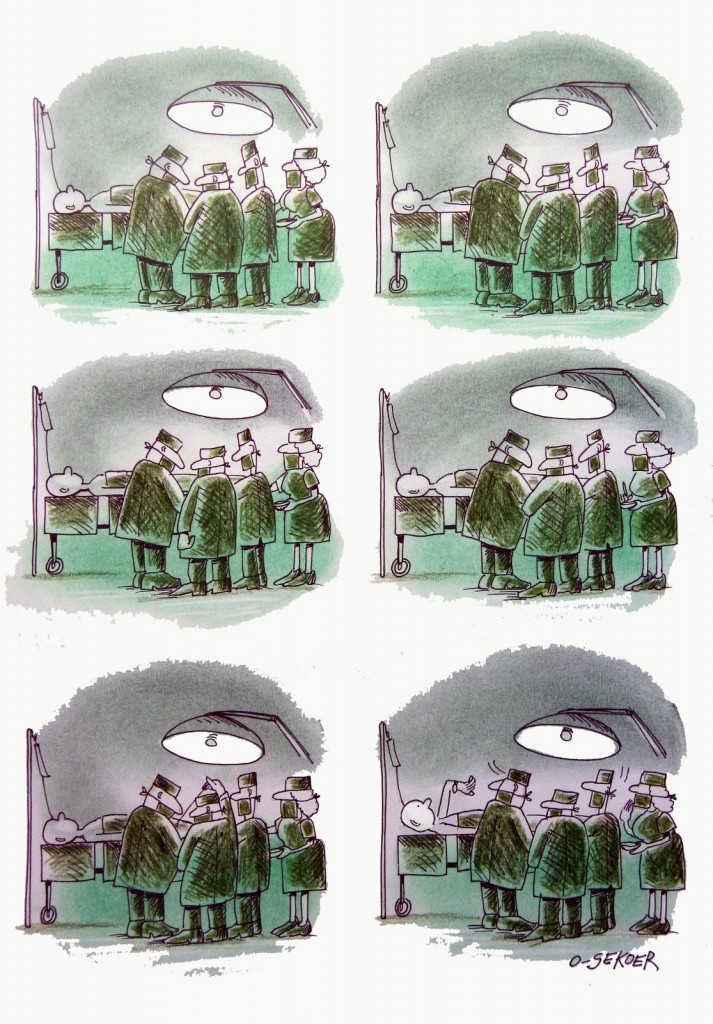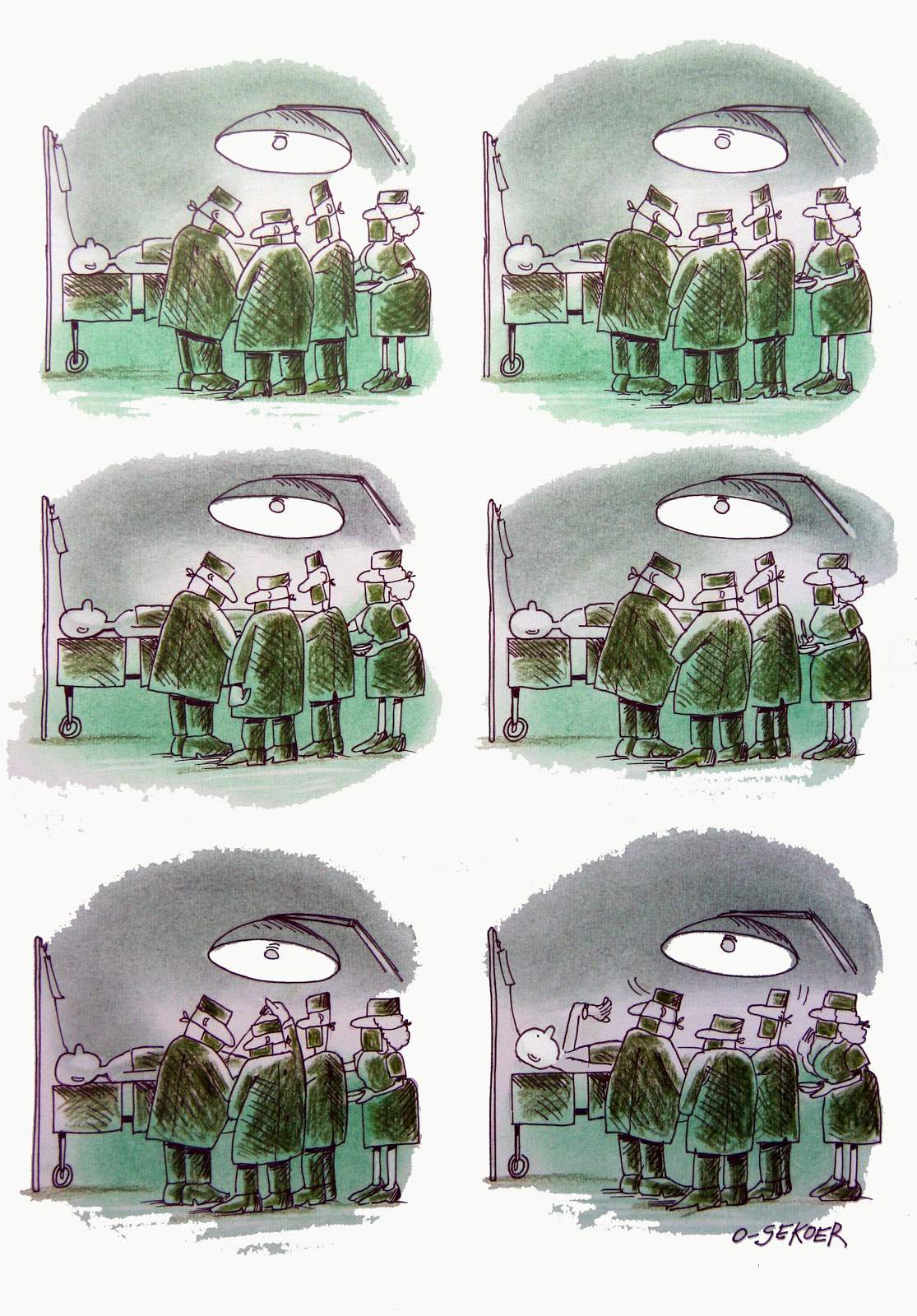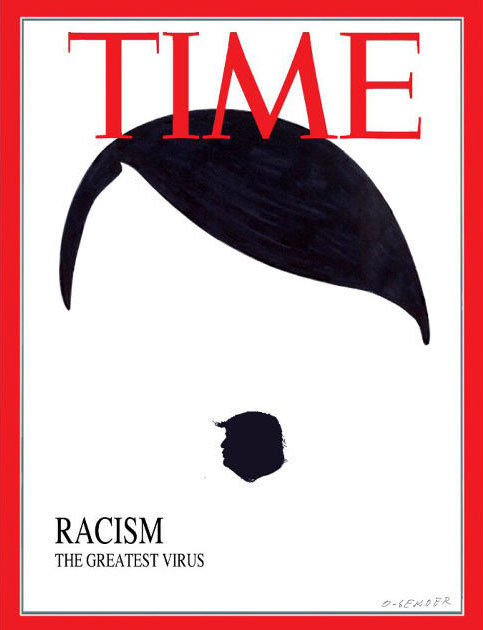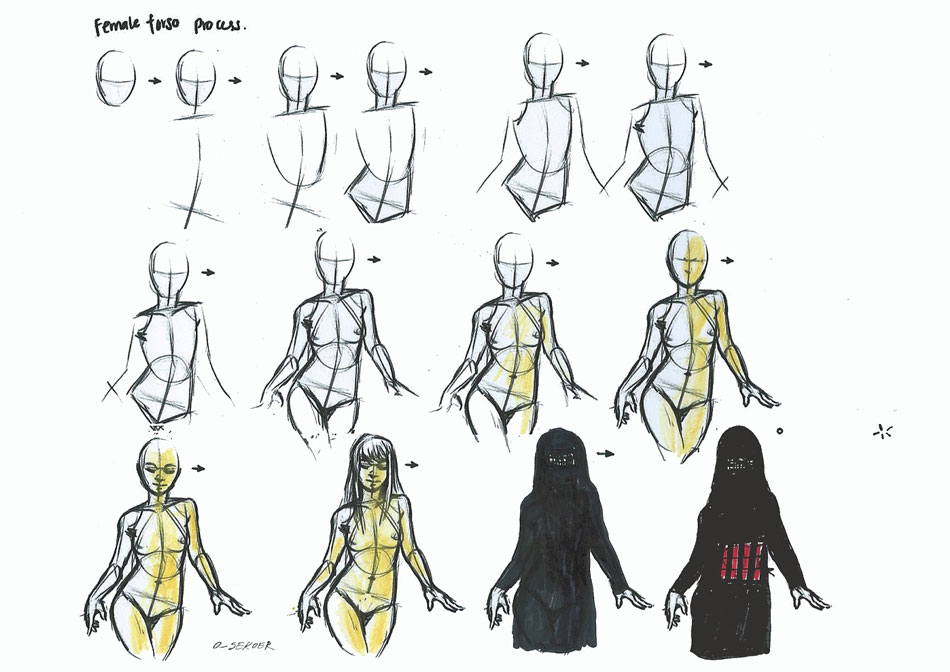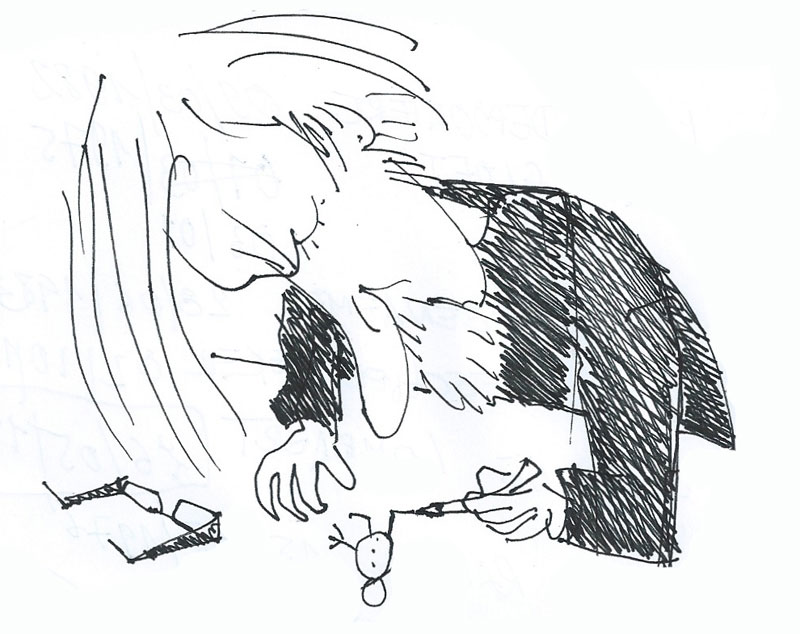O-sekoer is a Belgian cartoonist and photographer. He has made thousands of cartoons since his debut in 1979, both about politics and current affairs, but also more timeless topics. Internationally, he is probably most recognizable for his 2016 silhouette drawing of Hitler with a smaller silhouette of Donald Trump as his mustache. O-sekoer is additionally notable for participating in countless contests all over the world, which helped him win a great many awards.
Life and career
He was born as Luc Descheemaeker in 1955 in Bruges, West Flanders, but grew up in the town of Bavikhove. Between 1973 and 1975, he studied Plastic Arts at the Sint-Thomas Institute in Brussels. Afterwards, he taught plastic arts himself, and was a drawing teacher at the St. Jozef College in Torhout until his retirement in 2016. Since 1981, Torhout has been his his hometown. He also does volunteer work through the non-profit association Banglabari in Dhaka, Bangladesh.
Cartoons
In 1979, Descheemaeker debuted as a cartoonist, signing with "O-sekoer". His pseudonym is a phonetic spelling of the French expression "Au secours!" ("Help!"). The "s" in his pseudonym is also sometimes written with a capital. His cartoons often combine different graphic and digital techniques, including photo collages. He is equally versatile in his subject matter. O-sekoer has made both news-related cartoons and apolitical ones. The cartoonist is unusual in the sense that his work isn't printed on a regular basis in any magazine or newspaper. Over the decades, he has sent his drawings to various cartoon contests, held in his home country and abroad. They have been compiled in a few book collections: 'Hersenschimmen' (1983), 'De Katte Loog' (1988) and 'O-sekoer Cartoons' (1998). Since 2012, O-sekoer's cartoons can also be seen on his blog and, since June 2010, on his personal Twitter account.
In 2004, O-sekoer designed a special street sign for the city of Torhout to remind people to drive slowly through the streets. It depicts a little walking man who carries his car underneath his arm. It can still be seen in the Torhout streets today.
2016 cartoon by O-sekoer depicting Adolf Hitler with the silhouette of Donald Trump.
Hitler/Trump silhouette cartoon
On 5 March 2016, O-sekoer was asked by Mexican cartoonist Arturo Kechms to make a special cartoon for the exhibition 'Trump: Un Muro de Caricatura' ("Trump: A Cartoon Wall"). The expo was inspired by U.S. President Donald Trump's campaign promise that he would build a wall near the U.S.-Mexican border to keep illegal immigrants out and have Mexico pay for it all. O-sekoer's cartoon shows a silhouette of Adolf Hitler, with the mustache being Trump's silhouette. It was even used as the cover of the exhibition catalog. On 2 November 2016, Trump was elected President, which gave the cartoon more prominence. Over the years it has gone viral on social media. During a protest march held in Mexico City on 12 February 2017, the cartoon was depicted on some signs of the protesters. In December 2016, it won second prize at the International Cartoon Contest in Teheran, Iran. It won the Davidsfonds Prize (2017) at the International Cartoon Festival in Knokke-Heist, Belgium, as well as the First Prize (2019) at the Portocartoon Festival in Porto, Portugal. In May 2020, O-sekoer altered the image a bit: he added a frame, to mimic the cover of Time Magazine and, in reference to the COVID-19 or coronavirus, added the caption "Racism, the biggest virus". It fooled many people into thinking it actually was a Time cover.
Brexit cartoon, 18 September 2018.
Controversy
In 2015, the offices of the French satirical magazine Charlie Hebdo were attacked. The terrorists murdered everybody inside because the magazine frequently printed cartoons that ridiculed the Prophet Muhammad. The attacks sparked debates about the limits of freedom of expression. One year afterwards, the International Cartoon Festival of Teheran, Iran, had the Holocaust as a major theme. The organizers stated that it's an unfair standard when non-Muslims feel that mocking the Prophet Muhammad should be tolerated, while the same people are less comfortable with mocking the Holocaust. Nevertheless the initiative was controversial from the start. Israel and many Western countries accused the organization of being antisemitic and denying the Holocaust. Director-general of UNESCO, Irina Bokova, openly condemned the event.
O-sekoer found himself in the midst of controversy, since he also submitted a drawing, which promptly won a Special Award. His cartoon depicted the Israeli West Bank Barrier, a controversial wall which segregates the Palestinians from the Israelis, which many feel violates international laws. In O-sekoer's drawing, the wall has the "Arbeit Macht Frei" slogan from the Auschwitz gate on top. Michael Freilich, chief editor of the Belgian-Jewish magazine Joods Actueel and representative of the Jewish population in Belgium, also protested against O-sekoer's cartoon. He was especially outraged that the cartoonist was congratulated in the Belgian press and at his school. O-sekoer didn't react to the controversy, but threw more oil on the fire by accepting an invitation to be a jury member for the festival the following year. The theme of the 2017 festival was equally controversial, and revolved around the idea that the actions of ISIS terrorists support zionism.
Recognition
Over the years, O-sekoer has won numerous awards. In his home country, he won the Press Prize at the International Cartoon Festival of Beringen twice, in 1982 and 1998. He is one of the most honored cartoonists at the International Cartoon Festival in Knokke-Heist, where he was awarded the audience award (1981, 2017), the Prize of the Casino (1982, 1985), the Knack Award (1992), Gouden Hoed (1994), Bronzen Hoed (2000) and the Davidsfonds Prize (2017). His photographs were often awarded at the Knokke-Heist Festival too, namely the Golden Lens (1984, 1987), public prize (1990), Prize of the General Bank (1992), the AGFA Prize (1994) and the Casino Photo Award (2000).
Outside of Belgium, jury members have been equally generous. Over the years, he won countless awards all throughout Western and Eastern Europe, as well as in Iran, India, Taiwan, China, North Korea, Indonesia, Japan, Colombia, Cuba, Argentina and Canada. The Belgian cartoonist won perhaps the most awards in Brazil, about ten between 1990 and 2018. As if his treasure chest wasn't exhaustive enough, O-sekoer also placed the European Cartoonale (1996) and the International Don Quichotte Respect Cartoon Contest (2017) on his cupboard, while being the first Belgian to win a prize, albeit "Second Prize" (2014), at a UN contest for political cartoons.
Between 18 January until 5 April 2009, O-sekoer's work was exhibited in the ECC in Kruishoutem.


